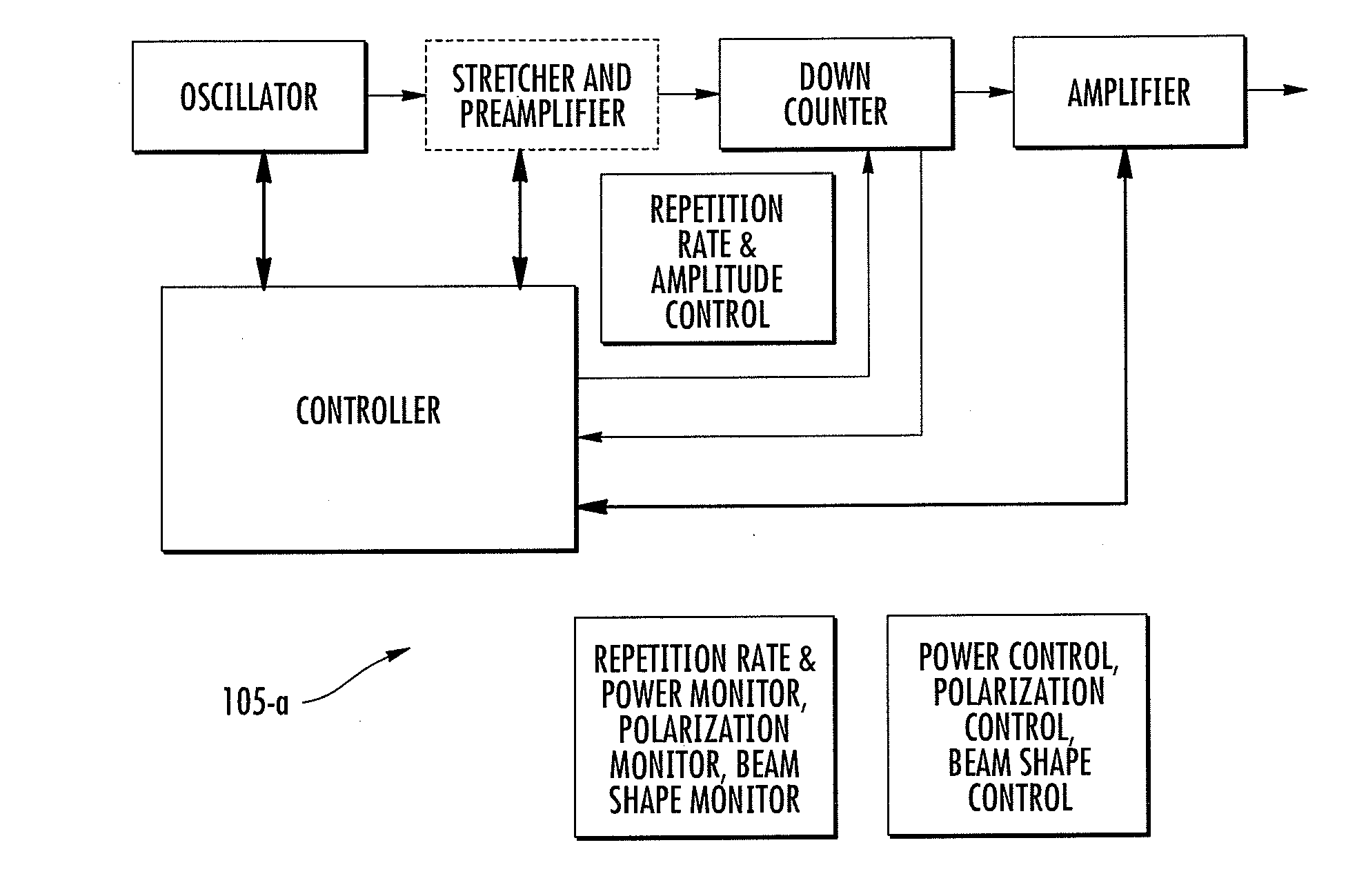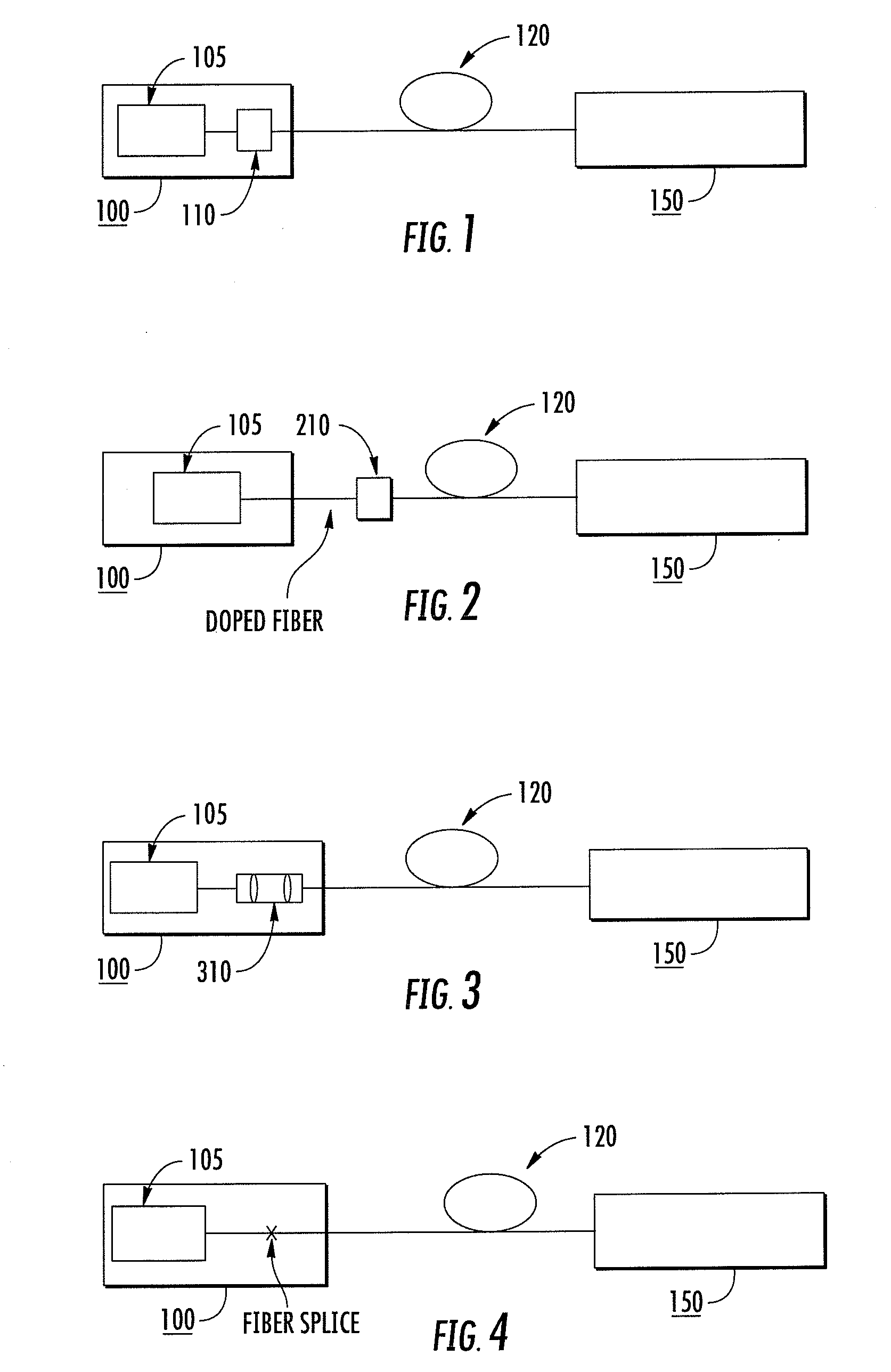Methods and systems for fiber delivery of high peak power optical pulses
a fiber and optical pulse technology, applied in the direction of electrical equipment, basic electric elements, laser details, etc., can solve the problems of reducing the quality of pulses, reducing the available energy of soliton pulses, and reducing the efficiency of soliton pulses, so as to achieve superior pulse quality for the end-use apparatus
- Summary
- Abstract
- Description
- Claims
- Application Information
AI Technical Summary
Benefits of technology
Problems solved by technology
Method used
Image
Examples
Embodiment Construction
[0029]Although it is not necessary to the practice of embodiments of the disclosed systems and methods to understand the underlying operative mechanisms, and without subscribing to any particular theory, it is useful to review various principles associated with Raman generation, and more particularly Raman solitons (RS),
[0030]Research in femtosecond pulse compression revealed that Raman scattering can improve the quality of compressed pulses in soliton-effect compressors (See G. P. Agrawal, Applications of non-linear fiber optics, Academic Press, pp. 280-287, (2001). Under certain optical conditions the propagation properties of RS in an optical fiber are similar to that of non-Raman solitons. To enter the RS regime, the fundamental pulse initially must reach the threshold intensity for stimulated Raman scattering given by:
gRPthLeffAeff≈16,
where gR is the Raman gain (on the order of 10−13 m / W), Pth is the threshold, Leff is the effective length and Aeff is the mode area.(See G. P. A...
PUM
 Login to View More
Login to View More Abstract
Description
Claims
Application Information
 Login to View More
Login to View More - R&D
- Intellectual Property
- Life Sciences
- Materials
- Tech Scout
- Unparalleled Data Quality
- Higher Quality Content
- 60% Fewer Hallucinations
Browse by: Latest US Patents, China's latest patents, Technical Efficacy Thesaurus, Application Domain, Technology Topic, Popular Technical Reports.
© 2025 PatSnap. All rights reserved.Legal|Privacy policy|Modern Slavery Act Transparency Statement|Sitemap|About US| Contact US: help@patsnap.com



